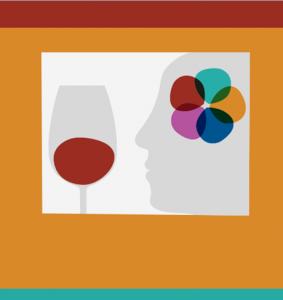Wine consumption in Canada is on the rise. A Vinexpo report indicates that consumption of wine in Canada grew three times larger than the global average during the period 2007-2001. This trend has also fueled the need for more wine education courses. In the last 5 years, the number of wine enthusiasts taking the Court of Master Sommeliers’ introductory exam almost doubled. The rising demand for wine education and the need to provide the wine sector with real-time consumer data was the impetus for the creation of Quini, a novel wine-rating application.
Quini is a free interactive wine-tasting app and market intelligence data solution available on PC, phones and tablets. Released in 2012 by a Vancouver start-up, its main objective is to provide a fun sensorial experience geared toward wine appreciation. The wine experience is delivered using a modern software platform that combines best practice wine tasting methodology with a sleek visual interface.
Developed by wine and sensory experts, Quini follows, in part, the UC Davis wine scoring methodology. The app leads the taster through a step-by-step sensory evaluation of wine that begins with a visual assessment followed by an olfactory and taste evaluation and ends with a rating of the finish, the lingering sensation in the mouth. The consumer then provides an overall opinion of the wine by selecting one of the four proposed quality ratings. The app also offers more advanced descriptors such as complexity, typicity and balance to cater to wine professionals. The ratings are obtained through the use of clever slider scales that measure the perceived quality and character of the wine. The two-dimensional ratings of the sensory space take the form of a flower petal, the size of which is representative of the wine’s perceived organoleptic quality. The five wine descriptors are then integrated into a bloom that acts as a graphical representation of consumer liking. These tastings may be conducted blind or not, with the “informed” version requiring tasters to rate their expectations of the wine. Quini will also compute a final score based on the five attribute ratings. The quantitative assessment is supplemented with a qualitative evaluation of aromas, flavours, flaws and defects. Close to one hundred aroma descriptors are available from a menu that is adapted from the wine aroma wheel created by UC Davis professor emeritus Ann C. Noble. The wine ratings are saved under a consumer profile that may be shared with other users. Individual scores and blooms can also be compared to other tasters’ aggregated responses within the Quini wine database.
Quini wants the consumer to make better informed purchases. Rather than relying on critics’ scores and reviews, wine drinkers are encouraged to use their senses to identify and recognise the styles they enjoy. This vision is based on the premise that wines are increasingly marketed as consumer goods with different styles suiting different palates. In this regard, applied wine research trends are particular focused on exploring product quality and how it relates to consumer preferences. Last year, UC Davis Professor and sensory scientist Dr. Hildegarde Heymann released the conclusions of a study of wine quality perception and preferences involving wine experts and consumers. The research concluded that hedonic liking and perceived quality showed a positive correlation for consumers. However, the degree of preference and perceived quality did not align with the scores that wines had obtained at wine competitions. When interviewed about the findings, the researcher remarked that there was a “significant disagreement in quality ratings among consumers. Every wine was rated high quality, and every wine was rated low quality by different consumers on the panel.” Consumers have a wider range of preferences when it comes to wine appreciation.
From a sensory science point of view, Quini is an innovative way to collect sensory data in a fast, consistent and controlled fashion. The option to perform blind or unblind tastings is attractive since it allows the consumer researcher and sensory analyst to explore the impact that psychological factors (label, price, brand biases) have on the perceived taste of wine. The qualitative descriptors constitute a standard and objective lexicon to describe wine, a “language” that is void of poetic or anthropomorphic prose. While the experience is intended to reproduce a wine expert’s tasting methodology, the generated consumer data should be treated as hedonic measurements rather than objective quality ratings of wine. The hedonic data relates to how much wine consumers like or dislike a particular product. The sensory information obtained in real-time is useful to wine marketers who can validate wine sales data efficiently. The key to obtaining valid consumer insights lies in the number of complete ratings available for data mining.
For the keen and computer savvy wine aficionado who wishes to learn more about wine, Quini provides instant feedback on the sensory experience through the unveiling of the individual wine score and bloom. The app is well suited for educational purposes where it can be used inside and outside the classroom. It may also find applications in sensory testing. Efficient data acquisition using cloud computing solutions makes for a more economical way of performing consumer research.







